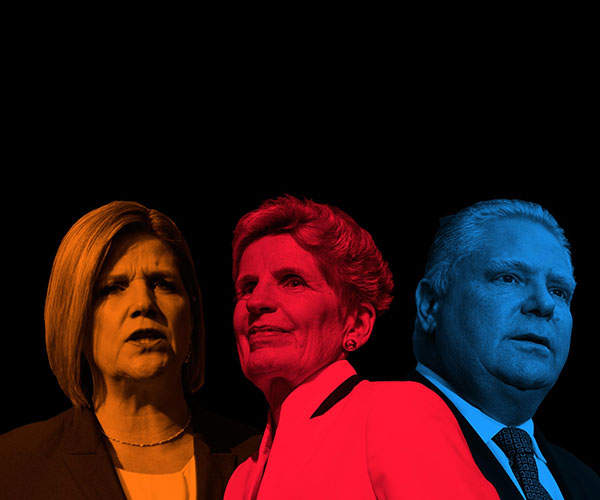Ontario’s solar industry took off under the FIT and MicroFIT programs and has continued, though at a slower pace, with the growing adoption of net metering and behind-the-meter systems. Both have a place.
“The fundamentals of solar energy are very strong,” says Wesley Johnston, Vice President of the Canadian Solar Industries Association (CanSIA), “and demand from consumers continues to go up.”
But potential users might not get to the fundamentals if they see excessive regulations and uncertainty around returns.
Last year the net metering rules changed, in what most see as a positive way, to remove the cap on installation size and allow storage integration.
In addition, third party net metering is legislated to take effect this October, which will open new opportunities for ownership and financing.
Meanwhile, IESO is conducting pilots on virtual (off-site) net metering. Some see the prospect of aggregators, including community co-ops and aboriginal communities, being able to share scale benefits with their members.
Danny Mueller, of PV supplier Frankensolar, is confident “the financials on net metering make sense,” and many companies are succeeding in this space. But why aren’t we seeing it really take off?
Mueller says one reason is that microFITs are still being built, and another is that solar—under net metering—requires a different sales approach toward homeowners and businesses.
Moreover, uptake of net metering is ultimately a function of the cost of electricity, which remains too low to really drive users. Politicians don’t help when they play off the cost of power; programs like Ontario’s Fair Hydro Plan, which dropped prices for homeowners some 25 percent in 2017, generally discourage participants.
“I’d like to see that gone”, says Mueller.
But PV is also getting cheaper, especially with new incentives like the Green Ontario Fund (GreenON) planned rebates of $1/Watt for residential PV and $0.75/W for commercial, with additional incentives for storage ($0.50/W) and off-grid installations ($3.00/W total). Funded through Ontario’s Cap and Trade auctions, this program could do a lot to boost PV markets.
“The industry and CanSIA is really excited about this,” says Johnston, noting CanSIA worked hard to lobby for the rebate.
But Ontario’s solar industry knows not to get too excited in an election year.
As Sarah Ivy Simmons of Power Advisory LLC points out, incentive programs are transitional; while they can boost the sector, they can’t be relied on to make a business case.
“If there is a change of government,” she says, “it will be a policy choice to keep rebates like this going.”
For two decades, the rising cost of electricity has been the subject of an “insanely charged political discussion,” and last year was at the top of the agenda. But the Fair Hydro Plan took some of the heat off—though by relying on borrowed money it will burden future taxpayers (or maybe ratepayers), who’ll have to pay some $21 billion more to cover the interest charges.
PC party leader Doug Ford has promised to shake up the electricity file, starting with an additional 12 percent decrease on hydro bills, to be achieved by shifting conservation programs to the tax base and using “hydro dividends” to reduce charges. He also intends to cancel “future energy projects”—through which projects he has in mind is not clear. Ford says these moves will provide savings of $173/year per household—though with some costs showing up again on the tax bill.
Most significantly, Ford also promises to scrap Cap and Trade, a move that would undo the GreenON rebates on PV and storage, along with many other green initiatives. It would also cost the Province the $1.9 billion per year it expects to raise through auctions. On top of that, it would be legally difficult, slow to complete, and likely expensive.
Unsurprisingly, the NDP is also targeting electricity costs as a campaign issue. A year ago the party was proposing to cancel contracts where it could, eliminate mandatory TOU pricing, and buy back the 30 percent of HONI—now 60 percent—that’s been sold by the Province. How the NDP will do this and still reduce bills by 30 percent remains to be seen.
Through it all, though, no party has stated any intent to repeal the Fair Hydro Plan or to change net metering rules. That’s probably smart on their part.
“Solar is very favorably viewed by voters and it plays an important role in regard to cleaning up the grid—but more importantly in moving the Province toward an innovation economy,” says Johnston.
So how much should we count on these pre-election statements?
As former Finance Minister Dwight Duncan recently opined, “None of our political parties is telling the truth about the electricity situation in Ontario,” especially around the true costs of electricity.
This is a shame, at least when it comes to PV because the truth is it’s increasingly competitive as a supply choice, but regulations and uncertainty continue to hold back participants.
Johnston believes the removal of these barriers “could help to reduce soft costs, which will help to make solar even more economical and more cost competitive, making solar more accessible to Ontarians.”
No doubt the proposed GreenON incentives would help, as Derick Lila, Founder and Editor at pvbuzz.com suggests.
“The entire solar sector is bracing for the outcome of this years’ elections,” he observes. “The proposed incentives are too good to ignore, and will potentially be a much-needed boost that will help grow the Ontario solar industry under net-metering.”













Comments